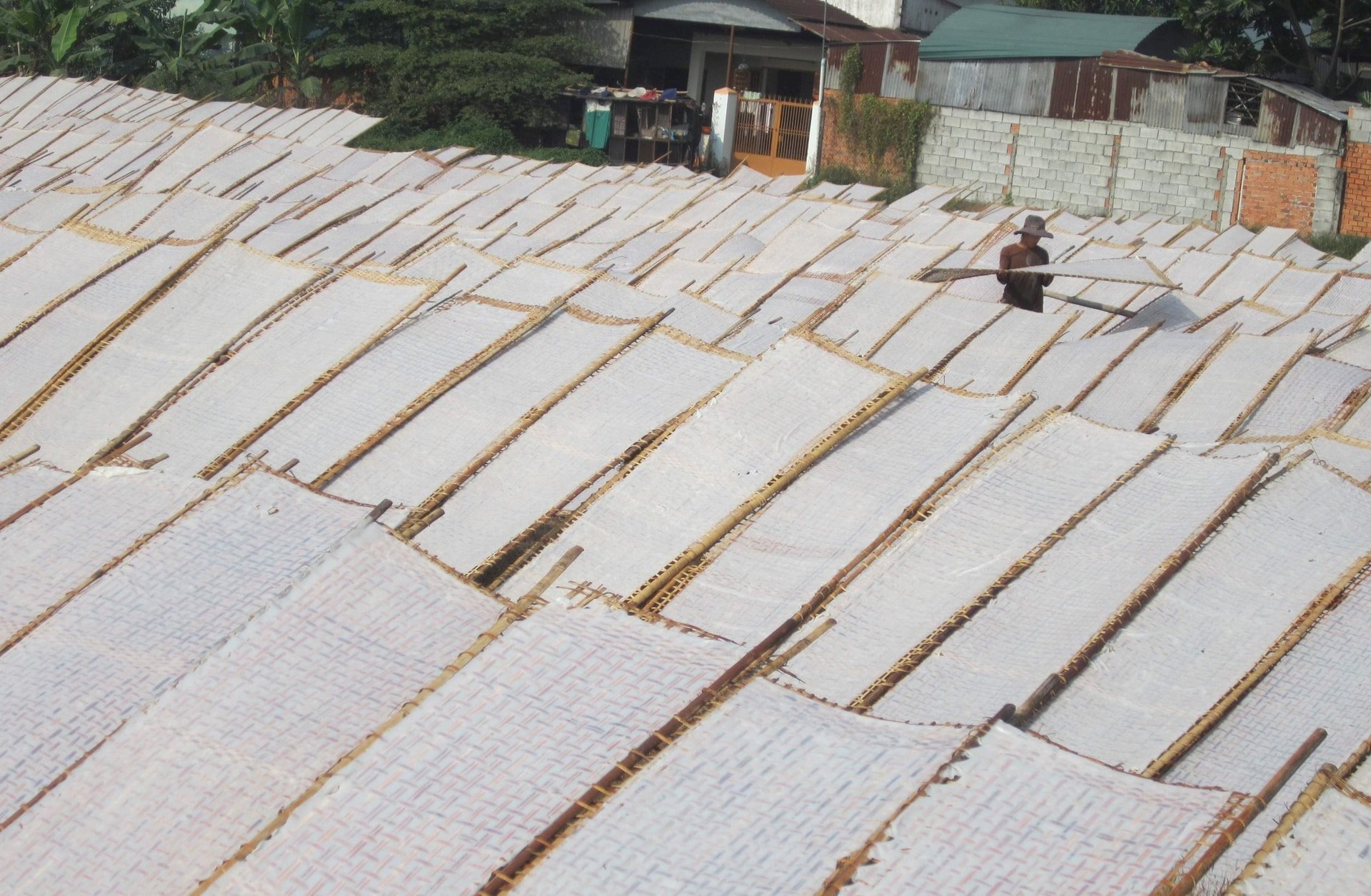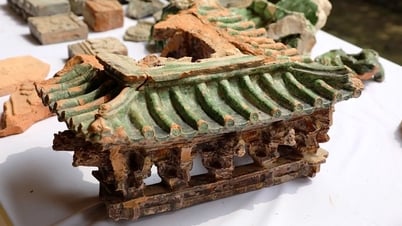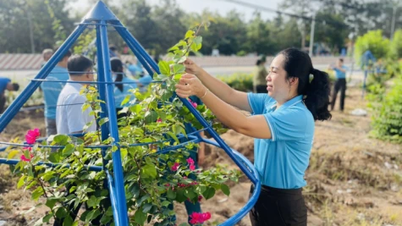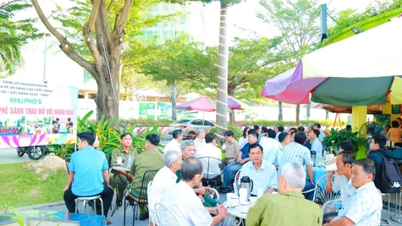As one of the oldest traditional craft villages in Ho Chi Minh City, these days, hundreds of rice paper kilns of people in Phu Hoa Dong commune (Cu Chi district) are busy producing to serve the year-end demand.

After being recognized as a traditional craft village, Phu Hoa Dong rice paper makers were given an extra boost with preferential policies and expanded tourism links with the craft village.
About 40km from the center of Ho Chi Minh City, Phu Hoa Dong is a commune located along the Saigon River, famous for its traditional craft of making rice paper. While many traditional craft villages in Ho Chi Minh City (and many other provinces and cities) are gradually fading away, even disappearing because they cannot compete with similar industrial products, the rice paper making profession has gradually adapted. Many rice paper farmers in Phu Hoa Dong have improved their technology, using machines to replace human labor in some stages to create higher productivity. Many kilns produce tons of rice paper every day in Phu Hoa Dong, but many kilns still produce in the old traditional way to meet the increasing demand of the market.
No one knows exactly when the rice paper making profession began in Phu Hoa Dong. However, some rice paper kilns have been passed down from generation to generation for up to 70 - 80 years. Ms. Nguyen Thi Thu (61 years old), a rice paper maker in Cay Tram hamlet (Phu Hoa Dong commune) said that she was from Trung An but married and moved to Phu Hoa Dong and was taught the rice paper spreading profession by her mother-in-law.
“The rice paper here is made from the main ingredient of rice flour. In the past, we used regular rice flour and a little sticky rice flour to make the cake more chewy and fragrant. Nowadays, the demand is different, some factories use wheat flour and rice flour, and maybe even sticky rice flour depending on the taste of customers. In addition, there are some other ingredients such as coconut water, salt, sugar, sesame... depending on the customer. For example, my family sells to traditional markets, so we only use rice flour, not wheat flour,” said Ms. Thu. According to Ms. Thu, during Tet, the demand for rice paper increases a lot, so she also increases the product. If on normal days, we only spread about 18 - 20kg of rice, during this time, the amount of ingredients increases to about 25kg and can increase more on the days near Tet.
Similarly, some households making rice paper in Phu Hoa Dong said that in recent years, they have also earned profits from linking with travel agencies to serve tourists. Accordingly, in addition to the famous Cu Chi tunnel tour with millions of visitors each year, many people have chosen to visit Phu Hoa Dong rice paper village (located quite close to the tunnel) to experience more about the life and craft of local people. The image of farmers milling flour, spreading flour, steaming rice paper, and drying rice paper on the roads in Phu Hoa Dong has attracted and brought many interesting experiences to tourists, especially foreign visitors. Income from tourism links also helps rice paper makers to be more comfortable besides their usual products. Moreover, in mid-October 2024, Chairman of the Ho Chi Minh City People's Committee Phan Van Mai signed a decision to recognize Phu Hoa Dong rice paper making as a traditional craft village in Ho Chi Minh City. This is a boost to help farmers in craft villages have more motivation to stick with the profession and receive some incentives according to regulations as well as increase the brand. In the context of many traditional professions facing difficulties, Phu Hoa Dong rice paper craft not only preserves its identity but also adapts to the development of society.
According to our research, in addition to households producing rice paper in the traditional manual way, many large-scale kilns have replaced human labor in some stages. These include grinding flour, mixing flour, steaming rice paper, cutting rice paper or packaging products... These kilns can supply the market with hundreds of kilograms of rice paper. However, the rice paper production process still requires human participation, especially in the stages of spreading rice paper, pouring flour, steaming rice paper... to get the best product.
According to Mr. Tran Chau - Chairman of the Farmers' Association of Phu Hoa Dong commune, the locality currently has about 100 rice paper production kilns using two methods: by machine and by traditional hand. The daily rice paper output is about 40 tons, with two-thirds being exported. The rice paper making profession also creates jobs for about 6,000 local workers, bringing a significant stable income to the people. In addition, thanks to the connection with supermarkets and convenience store chains, farmers' products also have a stable source of consumption.
Source: https://daidoanket.vn/lang-banh-trang-tat-bat-cuoi-nam-10296278.html

































































































Comment (0)